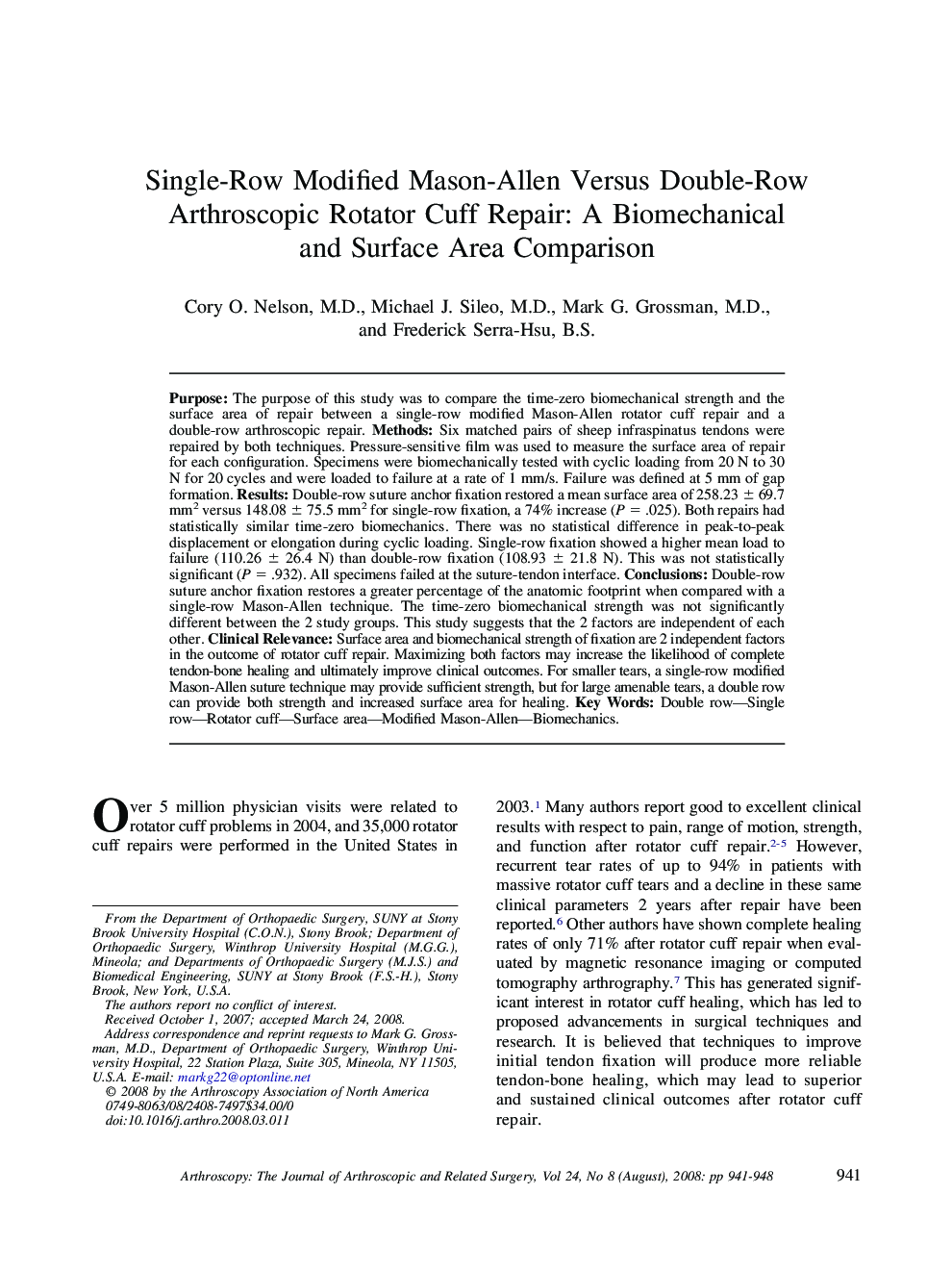| کد مقاله | کد نشریه | سال انتشار | مقاله انگلیسی | نسخه تمام متن |
|---|---|---|---|---|
| 4047139 | 1603581 | 2008 | 8 صفحه PDF | دانلود رایگان |

Purpose: The purpose of this study was to compare the time-zero biomechanical strength and the surface area of repair between a single-row modified Mason-Allen rotator cuff repair and a double-row arthroscopic repair. Methods: Six matched pairs of sheep infraspinatus tendons were repaired by both techniques. Pressure-sensitive film was used to measure the surface area of repair for each configuration. Specimens were biomechanically tested with cyclic loading from 20 N to 30 N for 20 cycles and were loaded to failure at a rate of 1 mm/s. Failure was defined at 5 mm of gap formation. Results: Double-row suture anchor fixation restored a mean surface area of 258.23 ± 69.7 mm2 versus 148.08 ± 75.5 mm2 for single-row fixation, a 74% increase (P = .025). Both repairs had statistically similar time-zero biomechanics. There was no statistical difference in peak-to-peak displacement or elongation during cyclic loading. Single-row fixation showed a higher mean load to failure (110.26 ± 26.4 N) than double-row fixation (108.93 ± 21.8 N). This was not statistically significant (P = .932). All specimens failed at the suture-tendon interface. Conclusions: Double-row suture anchor fixation restores a greater percentage of the anatomic footprint when compared with a single-row Mason-Allen technique. The time-zero biomechanical strength was not significantly different between the 2 study groups. This study suggests that the 2 factors are independent of each other. Clinical Relevance: Surface area and biomechanical strength of fixation are 2 independent factors in the outcome of rotator cuff repair. Maximizing both factors may increase the likelihood of complete tendon-bone healing and ultimately improve clinical outcomes. For smaller tears, a single-row modified Mason-Allen suture technique may provide sufficient strength, but for large amenable tears, a double row can provide both strength and increased surface area for healing.
Journal: Arthroscopy: The Journal of Arthroscopic & Related Surgery - Volume 24, Issue 8, August 2008, Pages 941–948